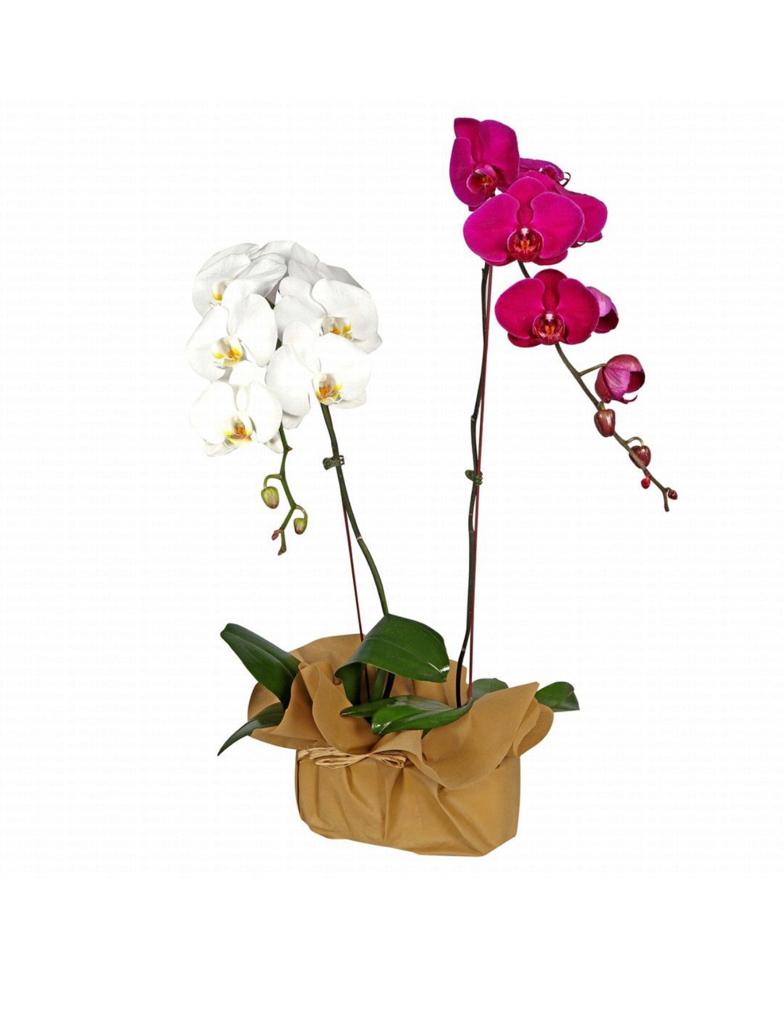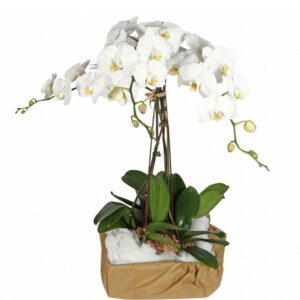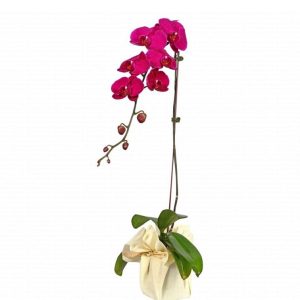PURPLE AND WHITE ORCHID PLANT WITH VASE
Orchids are a diverse and widespread family of flowering plants known for their striking beauty and unique characteristics. Here is a general description of orchid plants:
1. Appearance:
- Flowers: Orchids are renowned for their exquisite and often intricate flowers. The blooms come in a wide range of colors, sizes, and shapes, depending on the species. Some common colors include white, pink, purple, yellow, and orange.
- Shapes: Orchid flowers can be star-shaped, cup-shaped, or have complex structures, such as the distinctive lip or labellum that often serves as a landing platform for pollinators.
- Leaves: Orchid leaves vary in size, shape, and color. They are typically fleshy and can be either broad or narrow, depending on the species.
2. Growth Habit:
- Epiphytic or Terrestrial: Orchids can be epiphytic, growing on trees and obtaining nutrients from the air and rain, or terrestrial, growing in soil. Some orchids are lithophytic, growing on rocks.
- Pseudobulbs: Many orchids, especially those in the Orchidaceae family, have specialized storage organs called pseudobulbs, which store water and nutrients.
3. Reproduction:
- Pollination: Orchids have developed various strategies for pollination. Some mimic the appearance and scent of certain insects to attract pollinators, while others have specific adaptations for attracting certain animals.
- Complex Flowers: The reproductive structures of orchids are often complex, involving both male and female parts. The unique lip or labellum often plays a crucial role in attracting and guiding pollinators.
4. Popular Varieties:
- Phalaenopsis: Often called the “moth orchid,” Phalaenopsis is a popular and easily recognizable orchid variety with long-lasting, arching sprays of flowers.
- Cattleya: Known for their large, showy flowers and vibrant colors, Cattleya orchids are often used in corsages and floral arrangements.
- Dendrobium: Dendrobium orchids come in various sizes and colors, and they are characterized by their tall, cane-like stems.
- Oncidium: Also known as the “dancing lady” orchids, Oncidiums have small, distinctively shaped flowers arranged on arching sprays.
5. Care:
- Light: Orchids generally prefer bright, indirect light. The specific light requirements can vary among different orchid species.
- Watering: Proper watering is crucial. Many orchids prefer to dry out between waterings, and overwatering can lead to root rot.
- Humidity: Orchids often thrive in high humidity environments, mimicking their natural habitats in tropical regions.
6. Symbolism:
- Orchids are often associated with beauty, love, and luxury. Different cultures may attribute various meanings to orchids, ranging from fertility and virility to refinement and charm.
Orchids are prized for their aesthetic appeal, and they continue to captivate plant enthusiasts and horticulturists around the world.



